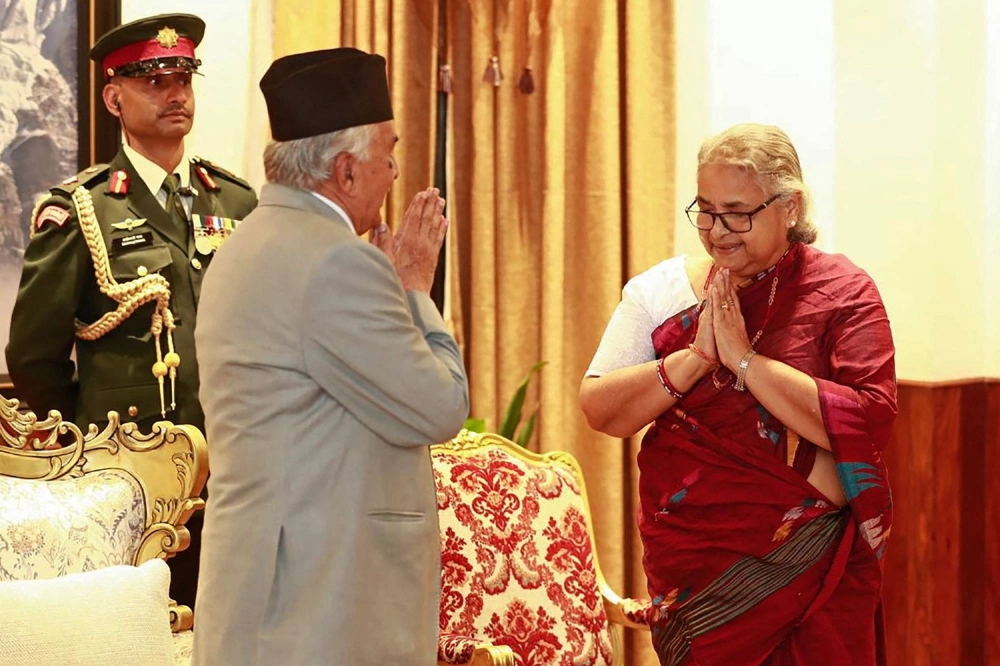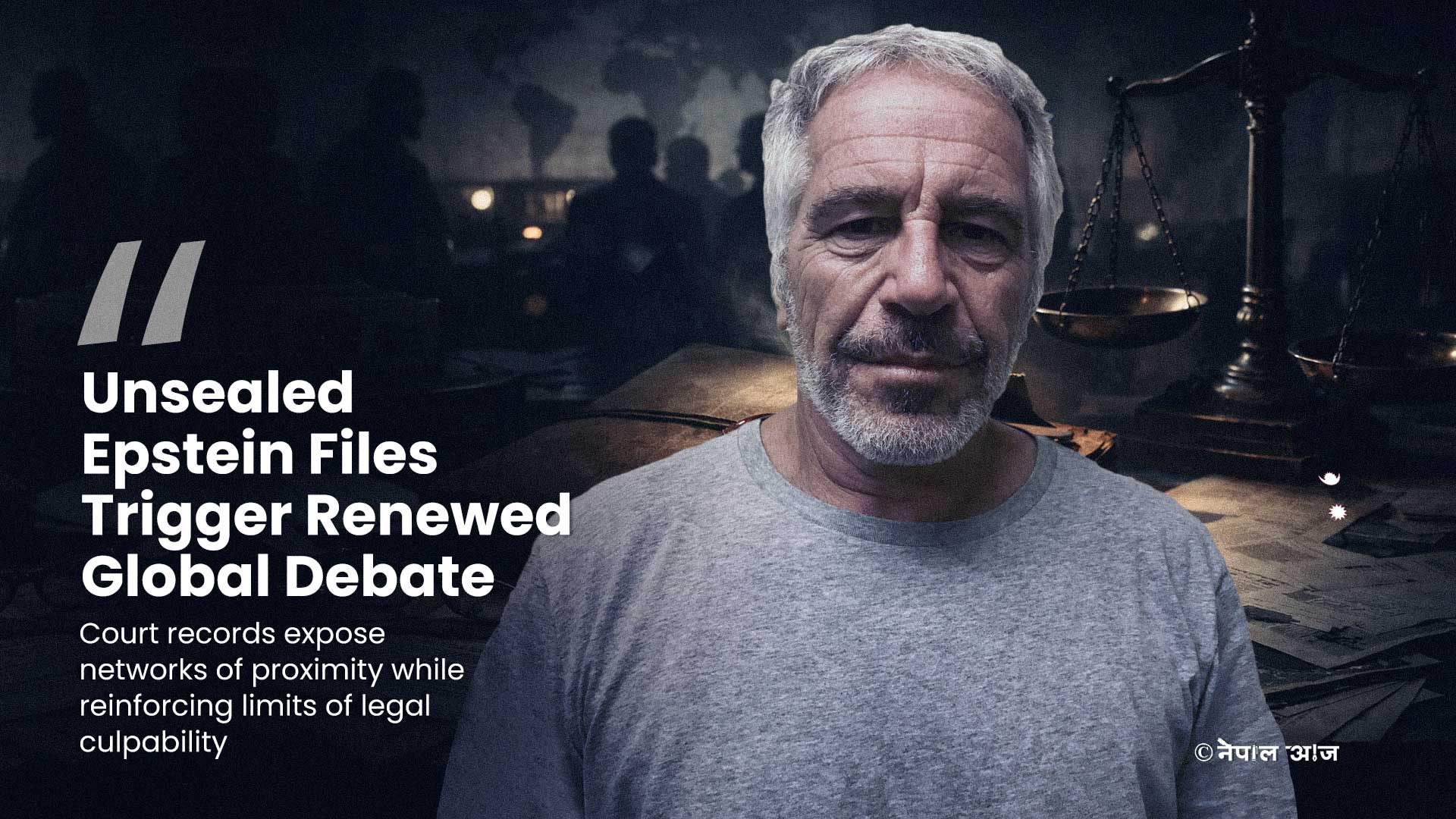Nepal’s Gen Z Revolt Delivers Grandma PM and Uncle Ministers: A Political Farce

Kathmandu — On September 8–9, 2025, Nepal’s streets erupted in violent protests branded the “Gen Z uprising.” The demonstrations toppled the sitting government, installing former Chief Justice Sushila Karki as prime minister. Protesters had demanded a directly elected executive, the abolition of federalism, restoration of Hindu statehood and monarchy, and an end to endemic corruption. But within weeks, the new cabinet was being ridiculed as a “nautanki” — a word in Nepali meaning spectacle, farce, or hollow show — with ministers accused of indulging in theatrics rather than addressing the people’s demands.
Nautanki 1: The Finance Minister and the Death of Fair Income Distribution
Finance Minister Rameshwor Prasad Khanal’s first act was to slash allowances, bonuses, and perks for civil servants under the banner of austerity. While pitched as fiscal prudence, economists noted it violated the principle of fair income distribution. With government salaries already far below the cost of living, eliminating modest bonuses disproportionately hurt lower- and middle-level workers, while top officials kept their privileges intact.
Nautanki 2: Kul Man Ghising’s Power Grab Across Three Ministries
Entrusted with three heavyweight ministries — Urban Development, Energy and Irrigation, and Physical Infrastructure — Kul Man Ghising swiftly removed Hitendra Dev Shakya from the Nepal Electricity Authority in what critics call an act of revenge. Once celebrated as the man who ended Nepal’s power cuts, Ghising is now accused of sparking instability, with frequent outages returning to ordinary households. Citizens paying the price see little more than political score-settling.
Nautanki 3: A 480 Million Rupee Police Uniform Scandal
Barely a day after Om Prakash Aryal took over as Home Minister, revelations surfaced of a 480 million rupee ($3.6 million) procurement scandal. Police headquarters approved contracts for uniforms at double and even triple last year’s prices, locking out competition with rigged tenders. From the minister to the police chief, all remained silent. For many Nepalis, it was a grim symbol: a “new Nepal” government already tainted by the old disease of institutionalized corruption.
Nautanki 4: Education Minister Mahabir Pun in a Rana Palace
Tech innovator Mahabir Pun, now Education Minister, found his office shifted from Singha Durbar to the historic Keshar Mahal — a Rana-era palace. Social media lit up with biting satire: “Now the minister will even sleep in the palace.” The optics of a reformist figure working from a colonial-style palace contradicted public hopes for a modernized, accessible education system. Critics saw royal luxury overshadowing substance.
Nautanki 5: PM Karki’s Empty Promises on Violence and Vandalism
Prime Minister Sushila Karki had vowed swift investigation into arson and vandalism during the uprising, which destroyed public property and heritage sites. Two weeks later, no progress has been reported. Survivors and taxpayers wait for accountability, while the head of government — once a symbol of judicial integrity — now appears presiding over silence.
Nautanki 6: The Communications Minister and Cozy Media Tours
Information Technology Minister Jagdish Kharel toured major media houses, while ignoring small outlets and injured journalists from the protests. Critics blasted his visits as career networking, speculating he was courting jobs at the same corporations for when he inevitably exits politics. His actions raised fears that press freedom is being undermined by selective favoritism.
Nautanki 7: The Ex-Judge Turned Law Minister
The appointment of Anil Kumar Sinha, a former Supreme Court judge, as Law Minister shocked observers. With widespread doubts over the new government’s constitutional legitimacy, critics argue a former judge should have declined the post on principle. Though not directly tied to scandal, his role is seen as a betrayal of judicial ethics.
What Could Have Been, What Happened Instead
The Gen Z uprising had made its demands clear: a directly elected executive, the end of federalism, revival of monarchy and Hindu identity, and above all, anti-corruption reform. These issues could have been tackled through a referendum or constitutional amendment, giving the people a direct voice. Instead, Prime Minister Karki filled her cabinet with family figures and loyalists — “Gen Z grandma as PM, uncles and cousins as ministers,” mocked one headline. The voices of younger generations, Millennials and Gen Alpha, remain sidelined.
Reflection
Nepal once again changed its rulers through revolt, but not its political culture. Theatrics, self-interest, and “nautanki” have replaced promises of reform. As history has shown, when governments betray public sacrifice, the streets will not stay silent for long — another uprising may be only a matter of time.




![From Kathmandu to the World: How Excel Students Are Winning Big [Admission Open]](https://nepalaaja.com/img/70194/medium/excel-college-info-eng-nep-2342.jpg)


